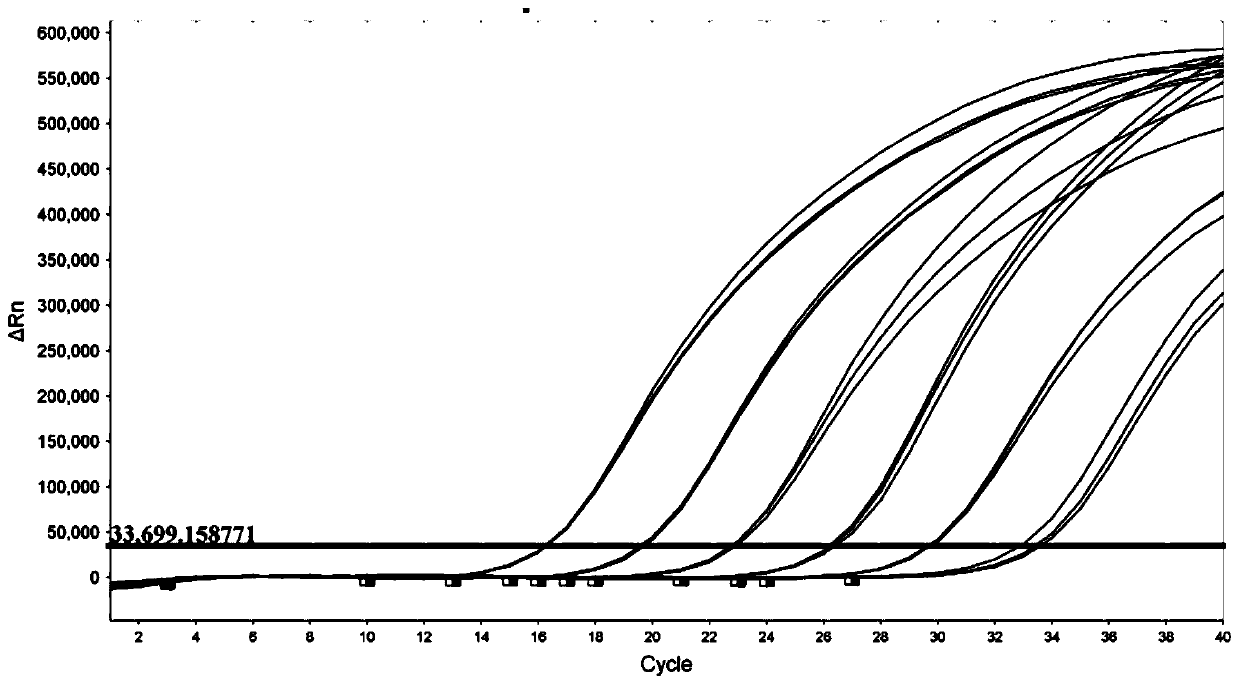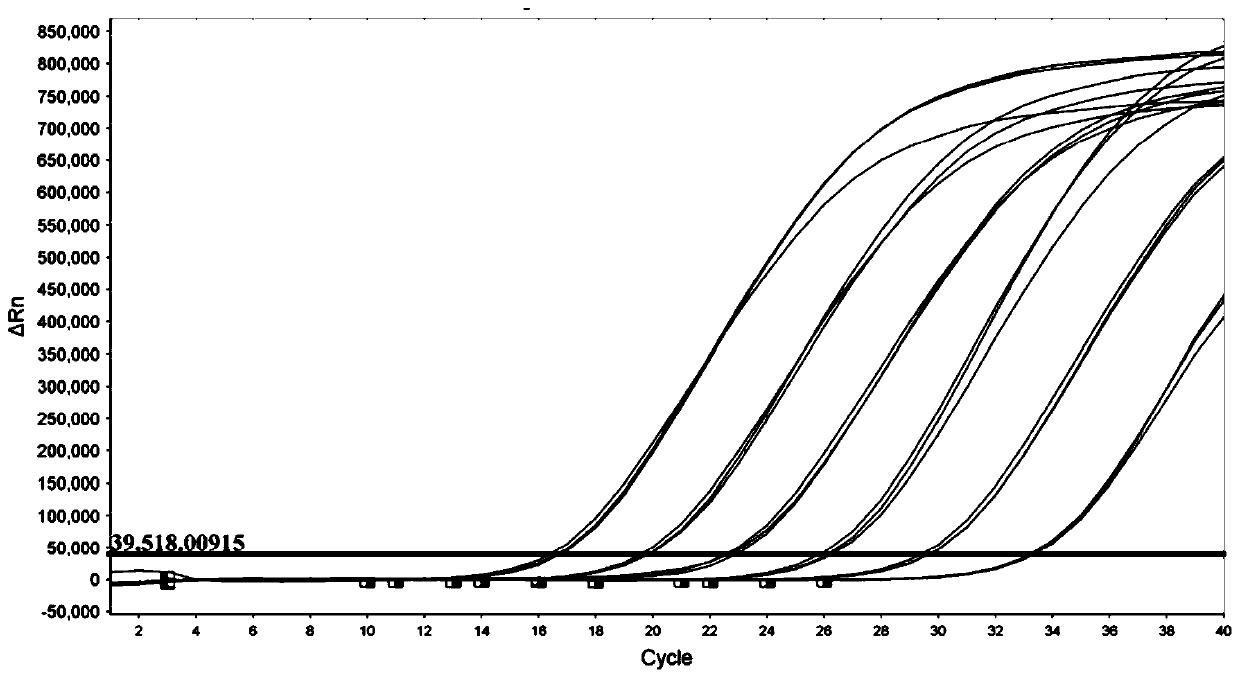Universal PCR primer combination for detecting chimeric antigen receptor genes, and application thereof
A chimeric antigen receptor and primer combination technology, applied in the field of T cell immunotherapy, can solve the problems of low sensitivity, high detection results, and low affinity, and achieve the effects of good specificity, high accuracy, and high sensitivity
- Summary
- Abstract
- Description
- Claims
- Application Information
AI Technical Summary
Problems solved by technology
Method used
Image
Examples
Embodiment 1
[0036] Example 1. Detection of the copy number of the chimeric antigen receptor gene in cells by real-time fluorescent quantitative PCR
[0037] 1. Fluorescence quantitative PCR primer and probe design
[0038] According to the gene sequence of the costimulatory signaling molecule ligand CD3ζ on different chimeric antigen receptors, the sequence of the internal reference gene Actin was retrieved at the same time, and after bioinformatics comparison and analysis, a highly conserved and specific region was found. The sequence is as follows:
[0039] Costimulatory signal molecule ligand CD3ζ specific sequence (5'-3'):
[0040] TGTCACTGGTTATCACCCTTTACTGCAAACGGGGCAGAAAGAAACTCCTGTATATTCAAACAACCATTTATGAGACCAGTACAAACTACTCAAGAGGAAGATGGCTGTAGCTGCCGATTTCCAGAAGAAGAAGAAGGAGGATGTGAACTGAGAGTGAAGTTCAGCAGGAGCGC (SEQ ID No. 7);
[0041] Internal reference gene Actin specific sequence (5'-3'):
[0042] GCACTCTTCCAGCCTTCCTTCCTGGGCATGGAGTCCTGTGGCATCCACGAAACTACCTTCAACTCCATCATGAAGTGTGACGTGGACATCCG...
Embodiment 2
[0074] Example 2, Real-time fluorescent quantitative PCR detection performance of chimeric antigen receptor gene copy number
[0075] 1. Specific detection
[0076] According to the method of Example 1, the two sets of primers and probes shown in Table 1 were used to amplify the DNA samples shown in Table 3, and the results are shown in Table 3. The results show that each primer-probe shown in Table 1 has specific amplification only to the template of the chimeric antigen receptor gene containing co-stimulatory signaling molecule ligand CDCD3ζ, indicating that the designed primers and probes have good specificity. sex.
[0077] Table 3. Specificity detection results
[0078]
[0079] 2. Sensitivity detection
[0080] Test one,
[0081]Template: Different concentrations of dilutions of the standard plasmid A (containing the CD19 chimeric antigen receptor (also containing the co-stimulatory signaling molecule ligand CD3ζ) gene) in step 3 of Example 1 (concentrations are 5...
Embodiment 3
[0099] Embodiment 3, real-time fluorescent quantitative PCR detects different samples
[0100] The primers and probes in Table 1 in Example 1 were used to detect different samples, and the amplification results were separated by gel electrophoresis and sequenced, and the sequencing results were retrieved. The results are shown in Table 6.
[0101] Table 6. The results of testing different samples
[0102]
[0103]
[0104] The results in Table 6 show that the primers and probes in Table 1 can accurately detect the co-stimulatory signaling molecule ligand CD3ζ on the BCMA chimeric antigen receptor gene and CD19 chimeric antigen receptor gene.
PUM
| Property | Measurement | Unit |
|---|---|---|
| Average molecular weight | aaaaa | aaaaa |
| Average molecular weight | aaaaa | aaaaa |
| Copy number | aaaaa | aaaaa |
Abstract
Description
Claims
Application Information
 Login to View More
Login to View More - R&D
- Intellectual Property
- Life Sciences
- Materials
- Tech Scout
- Unparalleled Data Quality
- Higher Quality Content
- 60% Fewer Hallucinations
Browse by: Latest US Patents, China's latest patents, Technical Efficacy Thesaurus, Application Domain, Technology Topic, Popular Technical Reports.
© 2025 PatSnap. All rights reserved.Legal|Privacy policy|Modern Slavery Act Transparency Statement|Sitemap|About US| Contact US: help@patsnap.com



